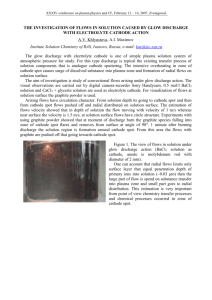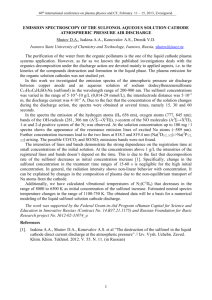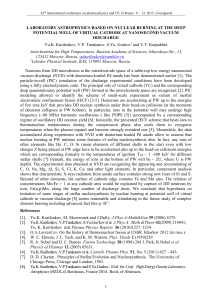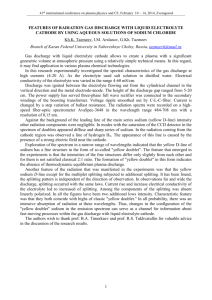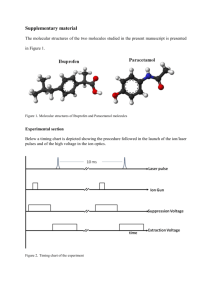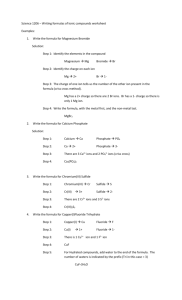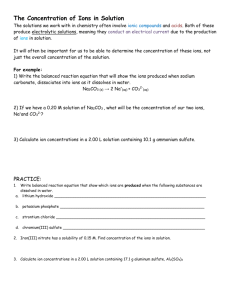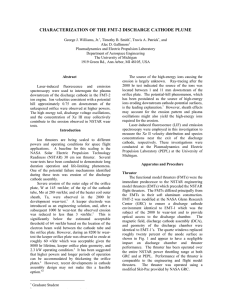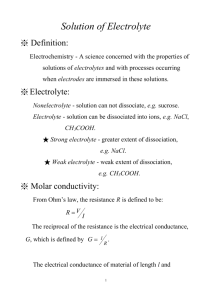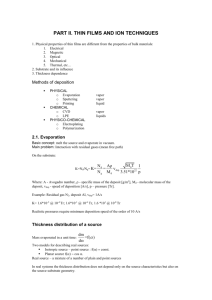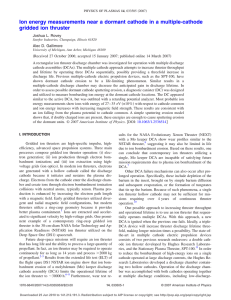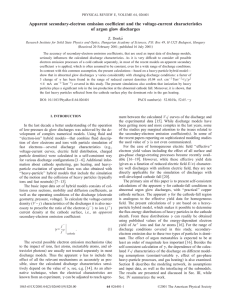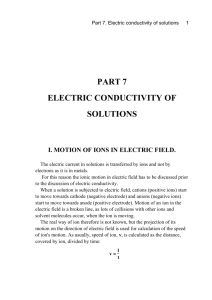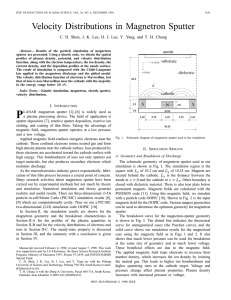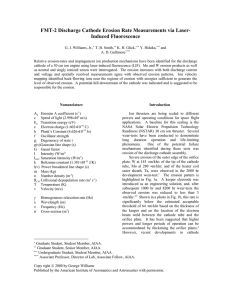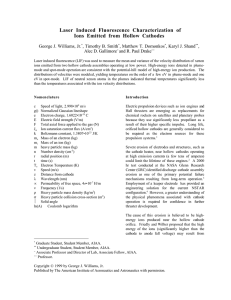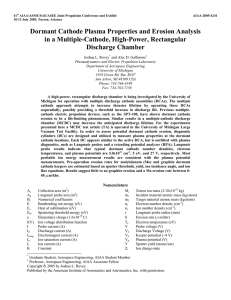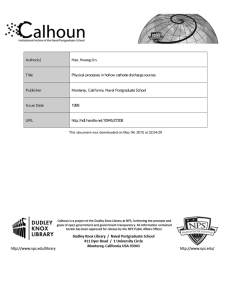Non-equilibrium transfer of liquid electrolyte cathode
advertisement
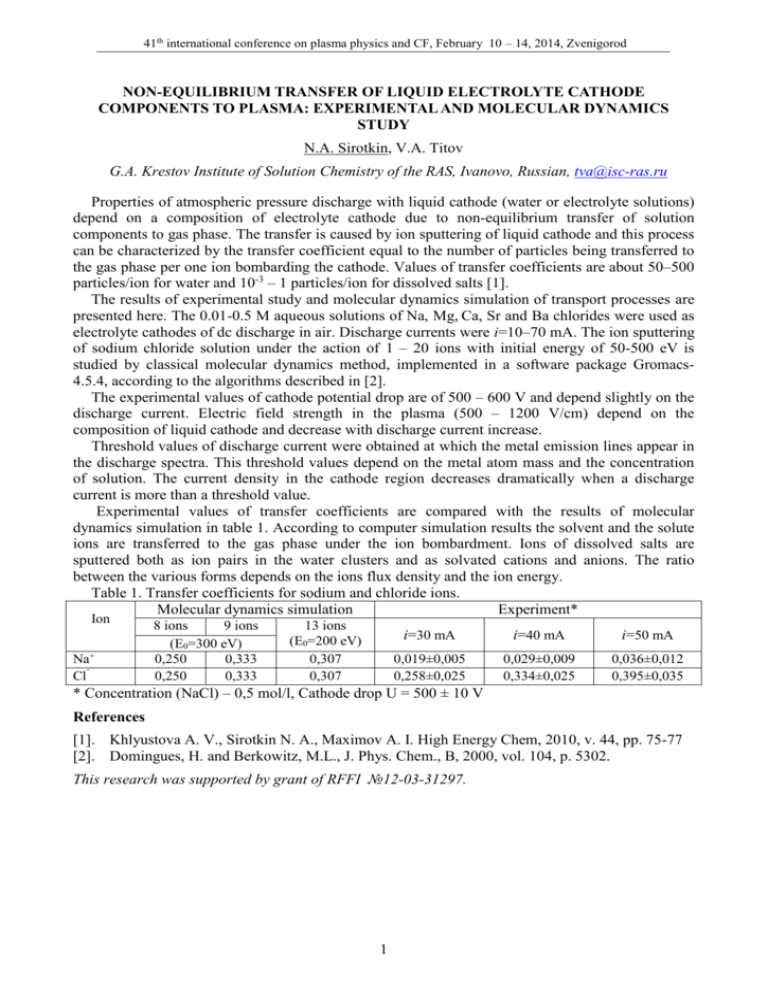
41th international conference on plasma physics and CF, February 10 – 14, 2014, Zvenigorod NON-EQUILIBRIUM TRANSFER OF LIQUID ELECTROLYTE CATHODE COMPONENTS TO PLASMA: EXPERIMENTAL AND MOLECULAR DYNAMICS STUDY N.A. Sirotkin, V.A. Titov G.A. Krestov Institute of Solution Chemistry of the RAS, Ivanovo, Russian, tva@isc-ras.ru Properties of atmospheric pressure discharge with liquid cathode (water or electrolyte solutions) depend on a composition of electrolyte cathode due to non-equilibrium transfer of solution components to gas phase. The transfer is caused by ion sputtering of liquid cathode and this process can be characterized by the transfer coefficient equal to the number of particles being transferred to the gas phase per one ion bombarding the cathode. Values of transfer coefficients are about 50–500 particles/ion for water and 10-3 – 1 particles/ion for dissolved salts [1]. The results of experimental study and molecular dynamics simulation of transport processes are presented here. The 0.01-0.5 M aqueous solutions of Na, Mg, Ca, Sr and Ba chlorides were used as electrolyte cathodes of dc discharge in air. Discharge currents were i=10–70 mA. The ion sputtering of sodium chloride solution under the action of 1 – 20 ions with initial energy of 50-500 eV is studied by classical molecular dynamics method, implemented in a software package Gromacs4.5.4, according to the algorithms described in [2]. The experimental values of cathode potential drop are of 500 – 600 V and depend slightly on the discharge current. Electric field strength in the plasma (500 – 1200 V/cm) depend on the composition of liquid cathode and decrease with discharge current increase. Threshold values of discharge current were obtained at which the metal emission lines appear in the discharge spectra. This threshold values depend on the metal atom mass and the concentration of solution. The current density in the cathode region decreases dramatically when a discharge current is more than a threshold value. Experimental values of transfer coefficients are compared with the results of molecular dynamics simulation in table 1. According to computer simulation results the solvent and the solute ions are transferred to the gas phase under the ion bombardment. Ions of dissolved salts are sputtered both as ion pairs in the water clusters and as solvated cations and anions. The ratio between the various forms depends on the ions flux density and the ion energy. Table 1. Transfer coefficients for sodium and chloride ions. Molecular dynamics simulation Experiment* Ion Na+ Clˉ 8 ions 9 ions (E0=300 eV) 0,250 0,333 0,250 0,333 13 ions (E0=200 eV) 0,307 0,307 i=30 mА i=40 mА i=50 mА 0,019±0,005 0,258±0,025 0,029±0,009 0,334±0,025 0,036±0,012 0,395±0,035 * Concentration (NaCl) – 0,5 mol/l, Cathode drop U = 500 ± 10 V References [1]. Khlyustova A. V., Sirotkin N. A., Maximov A. I. High Energy Chem, 2010, v. 44, pp. 75-77 [2]. Domingues, H. and Berkowitz, M.L., J. Phys. Chem., B, 2000, vol. 104, p. 5302. This research was supported by grant of RFFI №12-03-31297. 1

